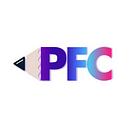What the Heck Is Lead Generation? — People First Content
If you never heard of lead generation, you’re missing out.
It’s arguably one of the most effective strategies in the inbound marketing methodology when it comes to finding potential customers. This matters because it brings you one step closer from turning a stranger into a buyer. But it’s not an easy task by any means. In fact, 61% of marketers say that it’s their number obstacle .
But once you learn the process and best practices of lead gen, you’ll be racing to implement it in your own marketing efforts and start increasing sales.
What Is Lead Generation?
First, let’s define a couple of terms. A lead is a someone who has shown interest in your product or service — typically through performing a call-to-action. So then, lead generation is the process of capturing leads with the hope of converting them into customers.
Why are they important? For staters, it’s one way to increase your brand awareness. It always helps your business when more people know who you are and what goods and services you provide. Second, and most importantly, they can attract qualified leads who are likely to buy from you. Ultimately, both reasons play a role in the increase of revenue.
But how does it work?
How Does Lead Generation Work?
The process may seem simple, but it’s more complex in execution. We break it down into four key steps.
1. Discovery
First, the user discovers your brand in some shape or fashion. This is where your digital marketing channels come into play. You have to promote and increase your internet presence so people can find you.
How do you do that? Here are several ways to drive traffic to your website.
- Blogging — One of the best ways to build a massive internet presence is by writing blogs. Not only does it keep your website fresh and updated, but it improves your SEO rankings. When your blog posts focus on answering relevant industry questions, it gives you more opportunities for people to find you through search. In fact, research shows that those with blogs increases their monthly leads by 67% .
- Social Media — There’s no denying the importance of social media for any business. Actively engaging and posting content on social networking sites like Facebook, Instagram, and LinkedIn is a great way to increase brand awareness and spark conversation. This is a cost-effective marketing tool to promote your business and funnel people to your website.
- SEO — Search engine optimization helps increase your visibility through organic search. The content on your website plays a huge role in your Google rankings. So be sure that for every page, you are including keywords, utilizing meta-descriptions, and writing high-quality content.
- Email — Emails remain to be a highly effective marketing tool because it’s a personal way of keeping in touch with your leads. Not to mention, they’re powerful traffic drivers. Weekly newsletters are great for linking and promoting your latest products and content so that it will lead the reader back to your site.
- Ads — Investing in paid search or social media ads is a quick way to gain more visitors. Google Ads gives businesses the opportunity show up at the top of the search results for specific keywords. It’s an efficient strategy that garners instant traffic.
The more marketing channels you use, the better. Each strategy has their unique advantages of pushing your business in front of the right audience.
2. Call-To-Action
Now that the user found your business, the next step is that they’ll click on a call-to-action — a button that tells the reader what they should do next. Prime examples of this are “Subscribe”, “Learn More”, or “Download Here.” As they are surfing your LinkedIn, blog, or website, you want to include a CTA button somewhere on the page — whether they’re embedded within in the content or as a pop-up banner.
To incentivize people to click, these buttons are usually tied to an offer, which will lead them to the next step.
3. Landing Page
After they click the CTA, they will arrive at a landing page. It’s a standalone web page where the user will share information such as their name, email, and number in exchange for an offer — usually a free piece of gated content .
That piece of content is what is also known as a lead magnet. They’re the driving component of this entire process. Without it, you won’t be able to complete step two. What makes them so enticing is the valuable information that they provide.
Several examples of lead magnets are:
- Ebooks
- Calendars
- Templates
- Checklists
- Email newsletters
Other things you can offer that are not content related can be webinars, online workshops, coupons, or free trials.
4. Lead Capture
Once they fill out the form in its entirety, you have successfully generated a lead — specifically a Marketing Qualified Lead (MQL). But the work doesn’t stop here. Now, it’s time to go for the close.
Moving forward, you want to maintain communications and build a stronger relationship with your prospects. This is known as lead nurturing. It’s a critical stage in the effort to turn those leads into customers. So, use your email marketing service to deliver relevant content and spark conversation. Each email could bring them closer and closer to making that purchase.
Start Generating Leads Today
Every business needs to have lead gen strategy in place if they want to be successful. So, use every bit of internet real estate that you have and start generating future customers.
Need help with your content offer? People First Content can help you create e-books that will attract leads like honey.
Originally published at https://www.peoplefirstcontent.com on March 16, 2022.
